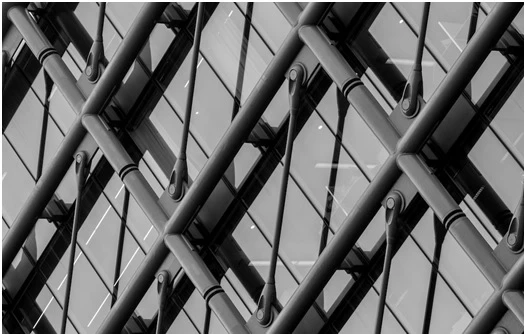Written By - Structural-india
India is one of the most seismically active countries in the world, with several earthquakes hitting different parts of the country every year. As a result, it's important for buildings to be constructed in a way that can withstand these powerful forces of nature. In this blog post, we'll take a closer look at earthquake-resistant buildings in seismic zones of India and how they are designed to protect occupants against the devastating effects of earthquakes. From innovative engineering techniques to cutting-edge materials, we'll explore some examples of buildings that have successfully weathered catastrophic tremors and emerged unscathed. So let's dive into the fascinating world of earthquake-resistant architecture Seismic retrofitting!
Seismic Zones of India and their building codes
India is one of the most seismically active countries in the world. It has been categorized into four seismic zones by the Bureau of Indian Standards (BIS) based on its vulnerability to earthquakes. The seismic zones of India are Zone II, III, IV, and V.
Zone II covers areas that have low susceptibility to earthquakes with an intensity of around 6 or less on the Richter scale. These areas include parts of Punjab, Haryana, Rajasthan and more.
Zone III consists mainly of peninsular India which includes Maharashtra, Karnataka and Andhra Pradesh among others; this zone faces moderate earthquake activity with intensities ranging from 6-7 on a Richter scale.
Zone IV encompasses regions like Bihar and Jammu & Kashmir where there is high potential for damaging earthquakes between 7-8 magnitude range.
Zone V consists majorly of northeastern states including Assam, Nagaland etcetera which are at very high risk as they face frequent tremors above 8 magnitudes making them extremely vulnerable to natural calamities like landslides too
Each zone comes with its own set building codes that ensure that buildings are constructed using specific materials so that they can withstand quakes without falling apart easily. The codes also dictate safe distances between neighboring buildings along with other factors such as minimum height requirements and construction techniques specifically meant to make structures resistant against earthquakes.
In conclusion these building codes help prevent loss of life during an earthquake while minimizing damage to property within each seismic zone across India.
Some examples of earthquake resistant buildings in India
India is a country that lies in a high seismic hazard zone. Over the years, India has witnessed several devastating earthquakes that have caused significant damage to buildings and infrastructure. However, architects and engineers in India have been working towards designing structures that can withstand the impact of these natural disasters.
One such example is the famous Lotus Temple located in Delhi. This building is not only aesthetically pleasing but also highly resistant to earthquakes due to its unique shape and design. The structure consists of 27 free-standing marble-clad petals arranged in clusters of three forming nine sides.
Another iconic earthquake-resistant building is the Victoria Memorial Hall located in Kolkata. It was designed by William Emerson, who incorporated several anti-seismic features such as an underground water tank for stability during strong tremors.
The Indian Institute of Technology (IIT) Hyderabad campus also boasts of earthquake-resistant buildings with an innovative base isolation system that reduces vibrations during seismic activity.
These examples highlight how architects and engineers are using advanced construction techniques to ensure safety during earthquakes while creating beautiful architectural marvels at the same time.
Why are these buildings resistant to earthquakes?
Earthquake resistant buildings in India are designed to withstand the forces of seismic activity, which can cause widespread damage and loss of life. These buildings use construction techniques and materials that have been specifically chosen for their ability to resist earthquake forces.
One key feature of these buildings is their flexibility. They are designed to be able to sway back and forth during an earthquake rather than breaking or collapsing under the force of the shaking ground. This is achieved through a combination of structural design, reinforced concrete elements, and shock-absorbing materials such as steel frames.
Another important aspect is their foundation system. Earthquake-resistant buildings in India typically have deep foundations that penetrate into stable bedrock or soil layers below the surface. This helps to ensure stability during an earthquake by preventing excessive movement or shifting around.
In addition, building codes in seismic zones require all new structures to meet strict safety standards including testing for maximum wind pressure, material strength requirements based on location-specific hazards such as tsunamis etc., stringent regulations relating to load-bearing walls etc.
It's clear that designing and constructing earthquake-resistant structures requires careful attention from architects and engineers who understand both the unique challenges presented by earthquakes as well as ways they can mitigate those risks using various advanced technologies available today!
Conclusion
Earthquake-resistant buildings are crucial in seismic zones and can save countless lives during earthquakes. India has made significant progress in developing building codes that consider the seismicity of different regions. Many examples of earthquake-resistant buildings exist across the country, ranging from government structures to residential complexes. These structures incorporate a wide variety of engineering techniques to withstand the impact of earthquakes and minimize damage.
It is important for all stakeholders involved in construction - including architects, engineers, contractors, and policymakers - to recognize the importance of building earthquake-resilient structures. The use of advanced technologies such as Building Information Modeling (BIM) and Virtual Reality (VR) can greatly aid in designing more efficient and safer buildings.
As India continues its journey towards becoming an economically developed nation, it must prioritize safety measures such as earthquake-resistant buildings that protect citizens' lives and property against natural disasters like earthquakes. By doing so, we can hope to mitigate any future loss caused by these catastrophic events while also ensuring sustainable development practices for future generations.
Google Map - https://goo.gl/maps/tYPUHNsdzmcTeRDe9


